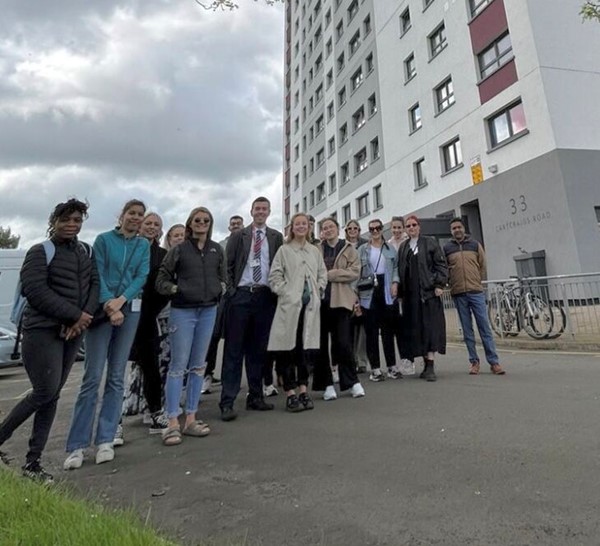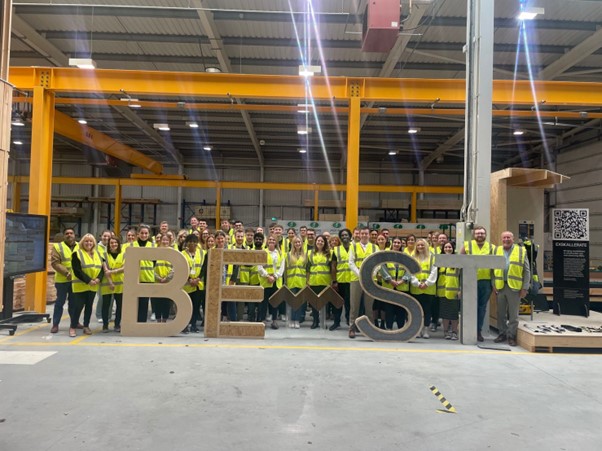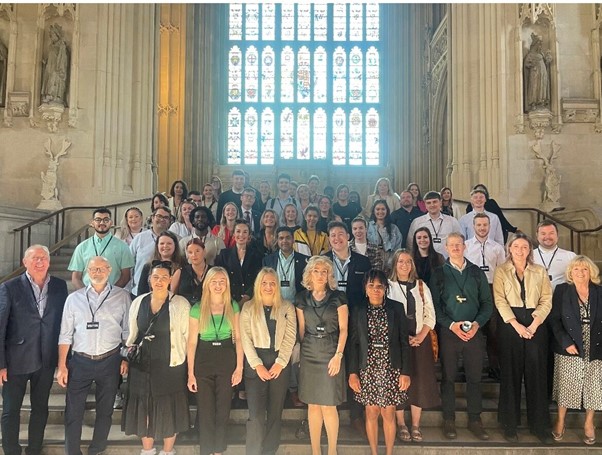Excited about an inclusive future for housing
Member Engagement Officer Ruth Chaplain has been at the Northern Housing Consortium for just over a year. She joined as part of the GEM programme, which offers a graduate route into housing.
Here she shares highlights from her first year in the sector and what her hopes are for housing and communities in the future.
What’s been your highlight of the year?
I have two highlights from the past year.
Firstly, my trip to Amsterdam, with the GEM programme was fantastic. I learned a lot about different approaches to decarbonisation and sustainable communities.
I also made firm friends with my fellow GEMs on the trip. I feel lucky to have a network of likeminded and friendly housing colleagues across the sector.
The second highlight was the Real Homes Real Change showcase launch in the House of Commons, last summer. I had never been in Westminster before, so that felt like a poignant career moment.
Having worked hard with the team in the run up, it was fantastic to see the report get such a positive reception. I felt very proud to be the facilitator of new relationships between tenants, housing professionals, civil servants and MPs.
Working closely with Jo Wilson (Head of Policy) and Tracy Harrison (Chief Exec) I found great value and inspiration in collaborating with an influential team of women (not forgetting Brian Robson, too!).
What is the biggest challenge for the housing sector going forward?
Co-production with tenants presents one of the most significant challenges for the housing sector moving forward. The traditional top-down approach to housing services is increasingly being replaced by a collaborative model that involves residents in the decision-making process. This shift requires a fundamental change in how services are planned and delivered.
Co-production demands effective communication, transparency, and meaningful engagement with diverse stakeholders to ensure that housing solutions meet the real needs of communities.
Embracing co-production means navigating complex power dynamics and fostering genuine partnerships in the community. This can be challenging but is ultimately essential for creating inclusive, sustainable, and responsive housing systems that truly serve the people they are meant to benefit.
What’s the most important thing you’ve learned from your first year in housing?
I have learned the importance of getting it wrong to get it right.
On a GEM study visit, we visited the BE-ST factory in Glasgow. Here, they take a creative and collaborative approach to solving the problems of decarbonising housing. They provided the facilities for any individual or organisation to develop and test their ideas and materials.
For example, one particular machine could test different materials to see how well they could insulate a building. When we visited, the material being tested was recycled denim.
This approach to exploring new techniques was refreshing and encouraged people to experiment (and to fail!).
It seems that in the English social housing sector, there is an expectation for organisations to be perfect and get everything right, all the time. This expectation is unrealistic and prevents open conversations that allow us to learn from each other’s mistakes.
It would be great to see more candid conversations about missteps in the process of decarbonisation. The NHC’s new Retrofit Clinic aims to provide that space and to support collaborative solutions. If you’d like to join us, sign up for the next one here.
What are you most excited about for the future of social housing?
Working at the NHC, I have learned about many pilot schemes that are being created in different communities. I’m really looking forward to seeing creative, inclusive, bottom-up housing pilots grow and become more permanent features of housing delivery.
For example, the West Yorkshire Mayoral Combined Authority and University of Leeds, have created a Safer Parks report. The report identifies key barriers that prevents different communities from using communal outdoor spaces. It provides a guide on how to create green spaces where all women and girls feel they belong.
Another example is AKT, who are a charity for homeless LGBTQ+ young people. They have piloted an innovative housing pathway project, that creates stable housing opportunities for the trans community.
These initiatives have the potential to redefine our approach to housing, offering exciting new solutions to address sustainability and community development. It is fantastic to see these ideas taking root and shaping the future of housing and communities.





